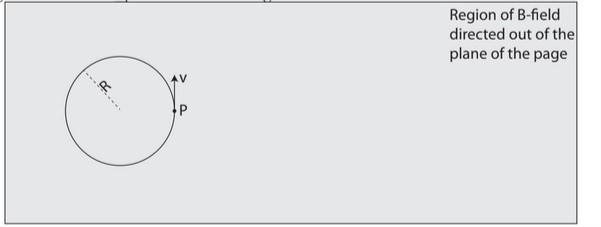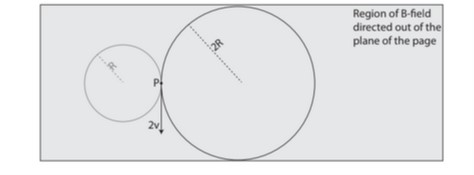Question
A charged particle is projected from point P with velocity v at a right angle to a uniform magnetic field directed out of the plane of the page as shown. The particle moves along a circle of radius R.

(a) On the diagram, draw a vector representing the magnetic force acting on the particle at point P.
(b) Determine the sign of the charge of the particle. Explain your reasoning.
(c) Explain why the magnetic field does no work on the particle as it moves in its circular path.
(d) A second, identically charged particle is projected at position P with a speed 2v in a direction opposite that of the first particle. On the diagram, draw the path followed by this particle. The drawn path should include a calculation of the radius of curature in terms of the original radius R.
▶️Answer/Explanation
Ans:
(a) Vector pointing toward center of circle.
(b) Negative. In order to apply the hand rule, the fingers of the left hand point in the direction of the particle’s velocity, and bend out of the plane of the page, leaving the left-hand thumb pointing toward the center of the circle, creating the centripetal force allowing the particle to move in a circular path.
(c) No work is done because the magnetic force is always perpendicular to the velocity of the particle.
(d) See diagram at right. Radius of the new circle is 2R, since \(mv^2/R=qvB\), therefore \(R=mv/qB\). 
